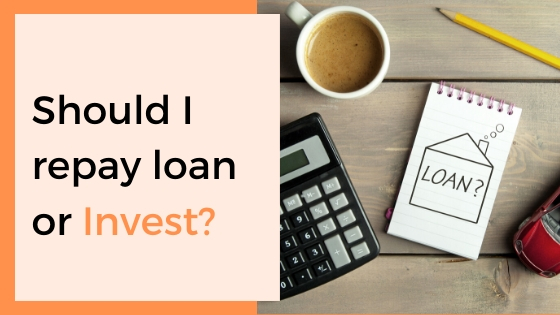- +91 9892515948
-



Confused between paying off debt and investing? Here’s how to do it
All of us have financial goals. While some want to buy a house, few would want to travel the world. And there are broadly two ways through which you can fulfil these goals i.e. taking debt and investing.
Taking debt provides instant gratification while in case of investing, you need to wait for some time before it bears fruit.
Debt can eat up a major portion of our monthly salary, leaving us with almost no money to invest for our retirement and other financial goals. Do you find yourself in the same scenario and are you confused about whether you should pay your debt and invest? This is a major confusion that arises in most people’s lives.
Here we will show you steps that will help you to navigate between paying your debts and investing.
Step 1: Have an emergency fund in place.
Before you tackle debt or start investing, an emergency fund should be the first step. Think of the emergency fund as a cushion. It will help you to take care if anything unfortunate takes place. E.g., in case of a job loss, you may have a hard time paying your EMIs and managing your family. Hence, in such scenarios, an emergency fund comes handy. Typically, one should have at least three to six months of expenses in the emergency fund.
Step 2: Check the interest rate of your debt and the expected returns of the investment option.
As a rule of thumb, you should ideally go with the highest interest or expected returns. If the interest charged on the debt is more than the expected returns from an investment option, then you should look at clearing the debt first. For example, if the interest charged on the credit card debt is 25%, it is less likely that there any investment option that can fetch 25% in the long run. So, in this case, paying off the credit card debt first is a good option.
Step 3: Does the loan come with any tax benefits
Loans like student loans and education loan come with low-interest rate along with tax benefits. In this scenario, the effective interest rate of the loan will be lower. Hence, you can check if the investment option gives you the same or more rate of returns. E.g., if the expected average rate of return of 14% over the long run, the interest charged on your home loan is 11%, then opting for investment will help you to grow your wealth.
Step 4: Decide what you can live with and what you cannot
There is no one straight solution when it comes to handling money. The kind of debt that one can live with varies greatly. Few may be okay with a home or car loan, but few may cringe on the idea of living under debt. For the latter category of people, paying off debt as fast as possible is the need of the hour. While paying off debt may help to breathe easy, paying off completely may take many years. Hence, if it is going to take a long time, you can look into investing a small proportion.
You can keep a 60-40 allocation towards paying off your debt and investing. If you can manage Rs.10,000 per month, Rs.6,000 can go in paying off your debt and the rest in investment avenues.
It may be a cumbersome process or bank may not be willing to take prepayment every month or for a small amount of money. In this case, you can park this amount in a liquid fund or make a recurring account for six months or so. Once, the amount becomes sizeable, you can use it to prepay your loan. For the rest Rs.4,000, you can set up a systematic investment plan in a diversified equity fund. This help to build a retirement corpus or fulfil other long term financial goals.
To know more about equity funds, consult your financial advisor today.
Sumedh Training academy LLP
1C 202 New Ashok nagar Vazira naka
Borivali west Mumbai 400091
+91 9892515948